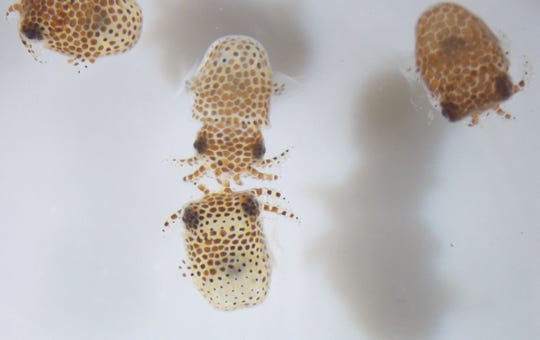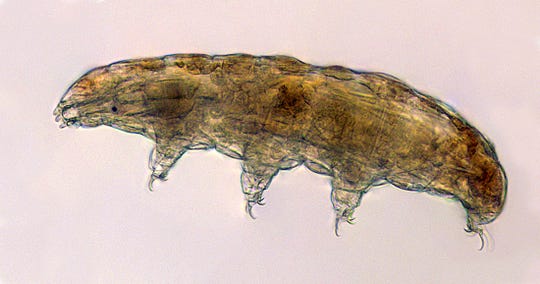NASA, SpaceX to launch baby squid and water bears to International Space Station

Story Highlights
- The 128 baby bobtail squid will be used as part of research into the effects of spaceflight on the interactions between microbes and animals.
- Tardigrades, also known as water bears, are known for their tolerance for living in extreme environments.
- The results could advance understanding of the stress factors affecting humans in space.
They are going for the ride of their lives.
On Thursday, NASA will launch more than 100 baby squid and about 5,000 microscopic animals on a mission to the International Space Station.
The creatures will head to the station aboard Space X’s Falcon 9 rocket, scheduled to launch at 1:29 pm ET.
The 128 baby bobtail squid will be used as part of research into the effects of spaceflight on the interactions between microbes and animals, the BBC said.
Microbes play a significant role in the normal development of animal tissues and in maintaining human health, NASA said. “Animals, including humans, rely on our microbes to maintain a healthy digestive and immune system,” said the experiment’s principal investigator, Jamie Foster of the University of Florida.
“We do not fully understand how spaceflight alters these beneficial interactions,” Foster said. “The experiment uses a glow-in-the-dark bobtail squid to address these important issues in animal health.”
These baby bobtail squid are part of an experiment that examines whether space alters the symbiotic relationship between the squid and the bacterium Vibrio fischeri. (Photo: Jamie S. Foster, University of Florida)
The 5,000 microscopic animals are tardigrades, also known as water bears, and are known for their tolerance for living in extreme environments. Tardigrades are the toughest, most resilient lifeform on Earth, able to survive for up to 30 years without food or water.
That makes them an ideal organism for studying biological survival under extreme conditions on Earth and in space, according to NASA.
Back to the ‘hothouse’: NASA announces two upcoming missions to study the planet Venus
The results could advance understanding of the stress factors affecting humans in space, NASA said. “Spaceflight can be a really challenging environment for organisms, including humans, who have evolved to the conditions on Earth,” said the tardigrade principal investigator, Thomas Boothby of the University of Wyoming.
“One of the things we are really keen to do is understand how tardigrades are surviving and reproducing in these environments and whether we can learn anything about the tricks that they are using and adapt them to safeguard astronauts,” he said.
Other experiments to be conducted on the ISS include a look into whether robotic arms can be operated remotely using virtual reality along with a study into the production of tougher cotton, the BBC said.
Tardigrades, or water bears, are being sent to the space station to study how they survive in high stress environments. (Photo: Thomas Boothby, University of Wyoming)
Source: Read Full Article


